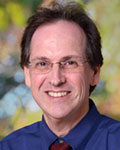Let me start by telling you that I am the luckiest guy in the world.
On August 8, 2021, I walked my daughter down the aisle when she married her partner on the rooftop of the Walker Art Center, a contemporary art museum in Minneapolis. It was a fairy tale wedding — the couple, the guests, and the venue were wonderful. We had a father-daughter dance, and I gave my “Father of a Bride” speech. It was one of the happiest days of my life.
Two weeks later, on August 22, 2021, I had a “widow maker” heart attack. My left anterior descending artery was 100% blocked. The odds of surviving were only 6%-12% (depending on what study your read). So simply surviving was a blessing.
The day of the heart attack was a Sunday. I woke up feeling normal and then the attack hit me just before I started walking downstairs. I was lucky to not fall, and that my wife was home to call 911, as I was completely incapacitated. The ambulance came quickly — more luck — and I live 10 minutes from the hospital — even more luck. The cardiologist arrived at the hospital soon after I did, and two stents later, saved my life. This series of good luck is why I am still here.
Getting a glimpse of the other side has left an indelible mark on my perspective and approach to life.
This experience was by far the most painful I have ever been through. On the ride to the hospital, I felt myself slipping away and willed myself to keep my eyes open so I could survive for my family. Getting a glimpse of the other side has left an indelible mark on my perspective and approach to life.
Matters of the Heart
My blood pressure, cholesterol and triglycerides have always been in a low, healthy range. I now know that if these are in a “bad” range it is definitively a problem, but a “good” range doesn’t guarantee everything is fine. The cardiologist explained that genetics trump good test results, and that high stress increases the risks of heart attacks as well. Unless I was being checked by a cardiologist, I would not have known I had a problem.
So, the first essential learning I want to share is that if you are 40 years old or older, get checked out by a cardiologist. I shared this advice with some close friends, all of whom followed it. One found out they needed stents and thus avoided a likely heart attack.
Team at Work
It took me almost six months for me to work up to 30+ hours a week, so I am not exaggerating when I say Sidwell Friends was patient and supportive.
I am also very fortunate to work at Sidwell Friends School. Head of School Bryan Garman was unwavering in his support and continually told me to take whatever time I needed to get healthy. Similarly, the outpouring of caring from the board, the administrative team, and the larger community was amazing and humbling.
It took me almost six months for me to work up to 30+ hours a week, so I am not exaggerating when I say Sidwell Friends was patient and supportive. Fortunately, with amazing administrative and operations teams as well as strong and engaged trustees, the school did not miss a beat, financially or otherwise. I am so grateful for everyone who stepped up to take on more responsibility in my absence.
A New Approach
Another essential learning was that I could not return to work, let alone commit to another contract, unless I figured out how to approach work differently. Business officers are, by nature, caretakers. We all too often put the wellbeing of our students, our teams, and our institutions before ourselves. We are also invariably “type A” personalities that give ourselves far less grace than we do others.
The heart attack made me internalize the simple fact that if I did not start prioritizing taking care of myself, I would likely not be around to take care of anyone else. I had to get over feeling selfish for worrying about myself and figure out how I could reengage with work in a way where I both still cared and could also keep my stress to a manageable level. Frankly, I didn’t know anyone else in my role that had figured out how to do this on a regular basis and was not sure if it could be done.
I can now say I have changed, but freely admit that the change is a daily work in progress. Decades of habits do not disappear overnight. I am, fortunately, getting a little better at it every month.
To figure out how I could do this, I created — in typical business officer fashion — a “Return to Work” project plan in the Asana project management tool I use. I aimed to identify both my own mental habits and behaviors as well as the most significant recurring work issues that created the most stress. My project plan included, in no particular order:
- Be OK not doing everything I used to do.
- Set boundaries for myself — know/define limits so I can disconnect and let go of stress outside of work.
- Improve my diet, sleep and exercise.
- Archive all the emails sitting in my inbox. Returning to work with an empty inbox was amazing, if too short lived — as mentioned before, this is a work in progress.
- Address the endless flow of business contracts needing reviewing, often at the last minute. Steps include:
- Setting clear contract guidelines for new and renewal contracts including timing, document format, etc., and pushing back every time I am given one outside of these parameters.
- Accepting that we would need to use outside counsel both more often and earlier in the process.
- Developing standard contract sections/formats that can be used to edit and/or issue contracts. This project is ongoing, and I hope to be able to share the results with NBOA members next year.
- Review and fill staffing gaps on my team. I needed my department heads to continue to take on more than they used to, and I needed to make sure they did not do so at the expense of their own health.
- Focusing, as much as possible, on only the most critical issues that I need to be involved with. This means accepting that some things may/will not be done the way I might advise, because I am not as involved with the details.
- Continue to work remotely on days when I need to. Zoom worked for two years during COVID, and it can still work today.
Work in Progress
So where I am now?
As I write this mid-summer, I can report that:
- I am (mostly) living by the goals I set out above. Did I mention it’s a work in progress?
- I have (mostly) learned to accept that I am not “invincible,” and that getting help is OK.
- I am eating better than I ever have and exercising regularly. I have lost 25 pounds! Consequently, my cardiologist has cleared me for the “occasional” glass of bourbon.
- My team continues to be amazing. I cannot thank them enough!
- Sidwell Friends School continues to thrive.
- I am grateful to G-d every day for all of my blessings, and for giving me another chance at life.
Next on the docket? I am looking forward to one of my sons getting married next June.
I am still the luckiest guy in the world.




